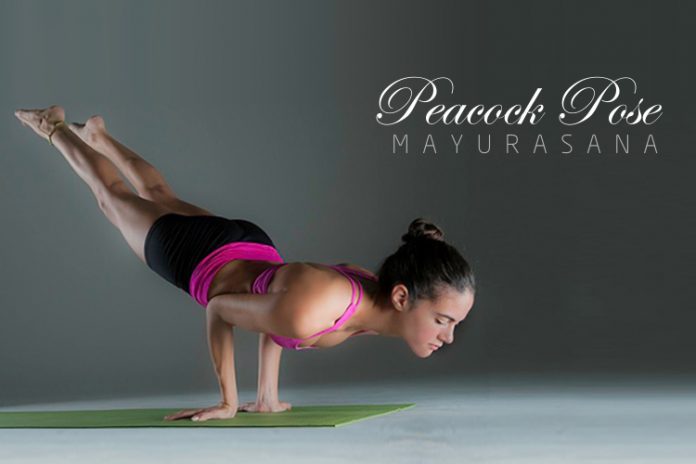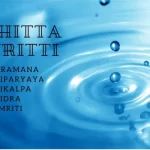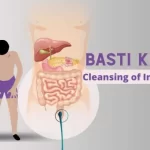Introduction
One of the earliest non-seated yoga poses is Mayurasana, which is recorded in the Sanskrit classic Amrita Siddhi, which was likely written in the 10th or 11th century CE, almost 500 years before the Hatha Yoga Pradipika. As a result, this position has been used for at least a thousand years.
Having said that, it is a crucial yoga pose to learn for anyone interested in postural yoga. This page aims to explain this posture’s benefits, steps, and meaning to make it easier to learn.
Mayurasana Information
| Pose Name | Mayurasana |
| Sanskrit Name | मयूरासन |
| IAST | mayūrāsana |
| English Name | Peacock Pose |
| Difficulty Level | Hard |
| Type | Arm Balance |
Mayurasana Meaning
Mayur in Sanskrit signifies a peacock. An asana is a position. Consequently, it is known as the “Peacock Pose” in English.
The name of this yoga position comes from how it mimics a peacock’s posture. The hands’ position resembles the peacock’s legs. The legs’ position also resembles an animal’s tail.
Peacock Pose Procedure
Safety and precautions for Mayurasana
One could get unbalanced and suffer a nose injury while mastering this posture. One should put a cushion on the floor beneath his head to prevent this. Once the stance is mastered, it is not required.
Those with big bodies and excessively weak arms should avoid this posture. Osteoporosis patients should refrain from engaging in this behavior. Additionally, those who have the following medical issues ought to avoid this posture. Before engaging in this behavior, they ought to speak with their doctor.
- High Blood Pressure, Stroke, and Cardiac issues
- Pregnancy
- Menstruation
- Hernia
Additionally, it is not recommended to perform Head Stand, Shoulder Stand, and Peacock stance all at once while practicing inverted yoga poses.
Preparatory Poses
To master this posture, arm balance is necessary. As a result, one should first get ready by practicing poses that increase arm balance. Swan Pose, for example, enhances arm balance.
In the Swan Pose, the body is supported by the toes as well as the palms, in contrast to the Peacock Pose where the body is only supported by the palms.
As a result, it is simpler to execute. Inverted poses should not be practiced right before this practice, though.
Mayurasana Steps
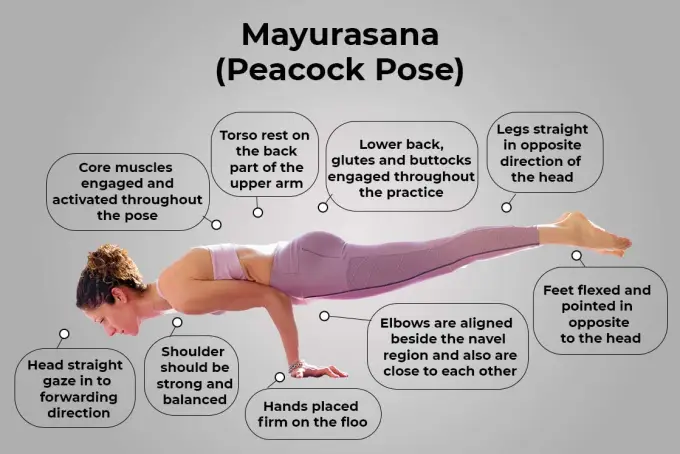
Step 1
Sit in Thunderbolt Pose
Step2
The palms should be on the floor with the fingers pointing toward the legs. After that, join your elbows and forearms together. Learn even more and rest your abdomen on your elbows. Afterward, place the upper arms on the chest.
Step 3
Stretching the legs backward while keeping them straight and more closely spaced. After that, raise your torso, legs, and only your hands to support your body. Hold your head high.
Step 4
Then, raise the legs and feet higher and collectively. Maintain the position for as long as it is comfortable for you while breathing normally.
Step 5
Bring your legs to the floor to exit the posture. Next, lower the head and trunk. The palms should be relaxed and raised over the head. Take a break right now till your breathing returns to normal.
Duration
As long as the person is comfortable, they may remain in the posture. At first, it might be prolonged for up to 30 or 1 minute. After that, this can be increased to two to three minutes. Three to five rounds of this position may be performed.
Follow Up Postures
Any of the postures listed below should be practiced as a follow-up stance after performing Peacock Pose.
Crocodile Posture
Corpse Posture
Downward Dog Pose
Mayurasana Variations
The following modifications are available for advanced posing considerations.
- Feathered Peacock Pose
- One-Legged Peacock Pose
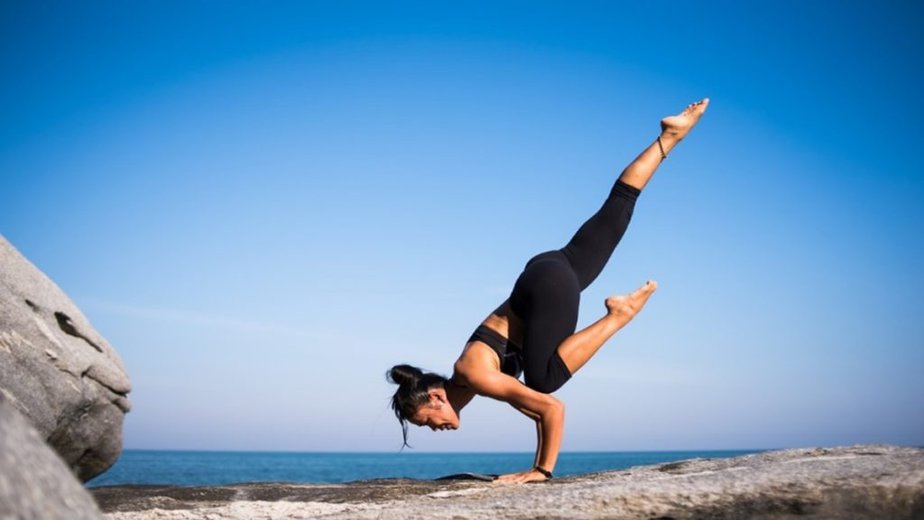
Mayurasana Mayurasana Benefits
The following advantages come from peacock pose practice.
- The Navel Plexus or Manipura Chakra is opened by the Peacock Pose. As a result, it helps in Kundalini yoga.
- Peacock Pose also aids digestion by massaging the digestive system.
- Additionally, it helps with ailments including diabetes, flatulence, and constipation.
- Similarly, the Peacock Pose helps the body rid itself of pollutants. As a result, it improves skin conditions and gets rid of boils.
- Additionally, it activates the abdominal organs. As a result, the liver, kidney, intestine, and endocrine glands perform better.
- Additionally, the parasympathetic nervous system is stimulated by the peacock pose. It consequently fosters mental and bodily harmony.
- Peacock Pose also aids in the treatment of psychosomatic illnesses. Asthma, hypertension, peptic ulcer, spondylosis, personality disorder, gastritis, and rheumatism are a few conditions it is beneficial for.
- Furthermore, it improves muscular control and strengthens the abdominal muscles.
- Peacock Pose is suggested for body purification and toxin removal in conventional yoga therapy. Additionally, it balances the three bodily doshas—wind, bile, and phlegm.
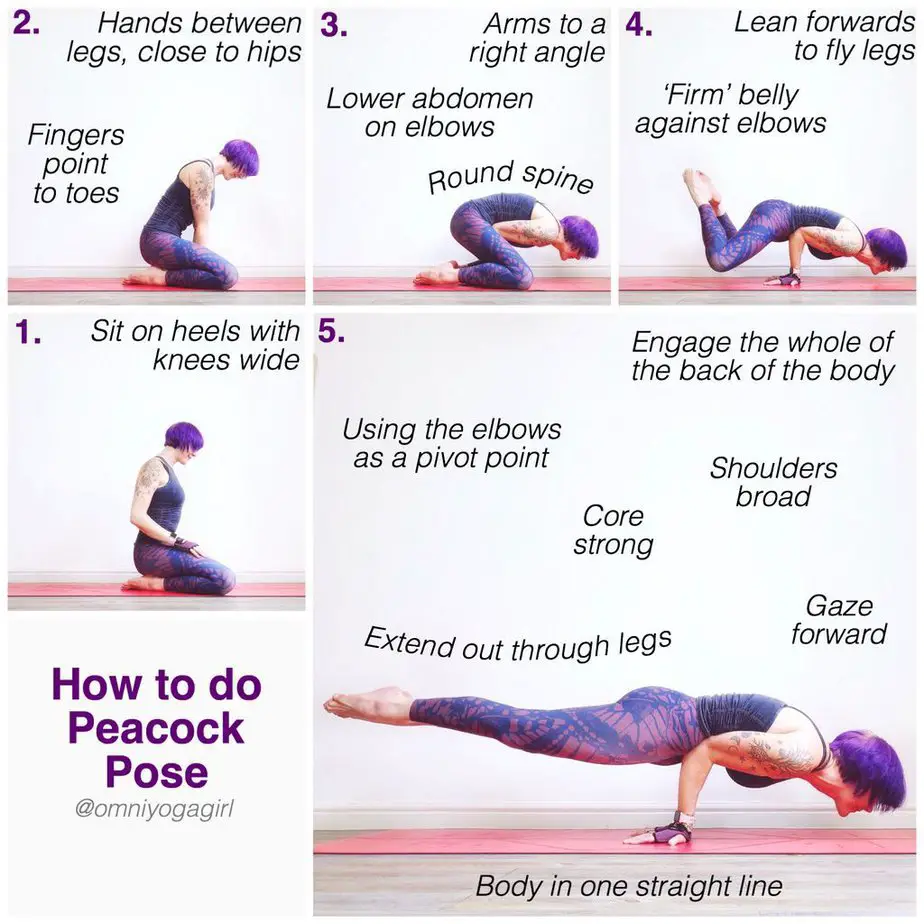
Precautions
While executing Mayurasana, certain safety measures should be kept in mind in order to prevent some typical mistakes;
- To stimulate the thoracic muscles, practitioners should stretch briefly before bending their elbows. As one leans into the position, this will reduce the risk of muscle injury.
- When entering Mayurasana’s ultimate pose, one should not elevate their legs abruptly. Keep moving slowly and steadily as you adopt the final stance to avoid falling to the ground face-first.
- To grasp the contracted core muscles, the elbows must be together or near one another. Otherwise, the torso is thrown off balance by swaying elbows.
Mayurasana Beginners Tips
- Holding your body in Mayurasana engages puts triceps brachii muscles in eccentric contraction. It needs immense strength in the forearms and shoulder. So, beginners with no history of asana practice should work on strengthening the tricep [efn_note] Tricep Exercises to Build Muscle https://www.menshealth.com/uk/building-muscle/a759179/tricep-exercises-best-build-muscle/ [/efn_note] before going into the peacock pose.
- A practitioner who struggles to contract their core muscles for Mayurasana may have excess belly fat and weak abdominal muscles. Therefore, before starting the Mayurasana practice, one should lose belly fat or build core muscle.
- This asana is difficult, and if you lack the necessary technique, you might experience pain when practicing. Beginners should therefore return right away to the Vajrasana in this circumstance.
Props and Modifications
- One can always utilize a modified form of the position by using props to make Mayurasana easier for novices. Here are a few methods to alter Mayurasana with props:
- Practitioners might secure their elbows with a strap to prevent swaying when in Mayurasana’s final position. This gives the pose’s basis even more vigor.
- Practitioners can place chair support beneath their feet if they find it difficult to maintain their legs raised throughout the final pose. To achieve balance in the pose, they can also ask for assistance from another individual.
- Blocks can be placed under the palms of practitioners. The position is slightly raised as a result, which keeps it in balance for longer.
Variations
Advanced forms of Mayurasana include Pungu Mayurasana Padmasana and Padma Mayurasana Padmasana. The following variants can be used by practitioners who desire to increase the level of challenge in their work;
1. Padma Mayurasana (Lotus in peacock pose)
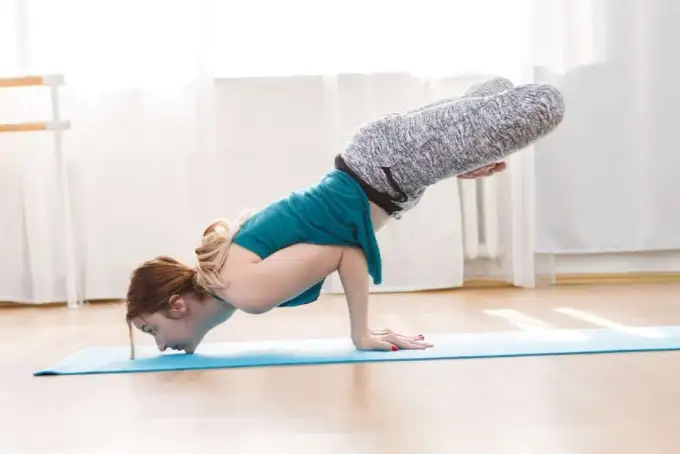
The legs are kept straight and contracted in Mayurasana, with the toes pointing backward. In contrast to Padma Mayurasana, which has the legs folded, Padmasana engages the glutes and thighs in addition to the core muscles to support the folded legs.
Legs are folded to create a Padmasana in Padma Mayurasana. In Padmasana, the folded legs are supported by the core muscles and compressed thighs while the full body weight is supported over the hands.
2. Pungu Mayurasana (Wounded Peacock Pose)
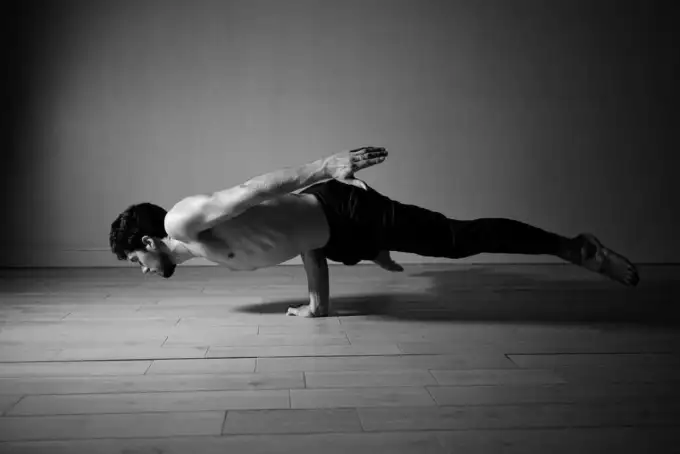
In this position, either hand’s elbow is tucked next to the navel to support the body. One hand remains in the air, the feet stay straight, and the balance is maintained by the abdominal muscles. While in Mayurasana, the feet are kept straight and the elbows are put against the abdominal muscles at the navel.
Another variant of the Mayurasana is the Pungu Mayurasana. Here, the torso is supported by just one hand, with the elbow resting next to the naval region. The feet continue to be straight, and another hand continues to point forward in the air.
Therapeutic Benefits
- Anatomical Explanation of “Mayurasana” in a research paper Mayurasana’s Anatomical Explanation https://www.ijtsrd.com/papers/ijtsrd29884.pdf It is stated that massaging the abdomen with the elbows massages the digestive system. This guarantees that the digestive system is toned and enhances performance. As a result, Mayurasana treats digestive disorders like heartburn, constipation, and bloating.
- The Mayurasana stimulates the Pancreas gland to secrete insulin hormone, which regulates blood glucose levels in the blood. This in turn acts as a therapeutic aid to Diabetes and hyperglycemia in middle-aged patients [efn_note] Role of yoga in control of hyperglycemia in middle-aged patients of non-insulin-dependent diabetes mellitus https://link.springer.com/article/10.1007%2FBF02871003
1. Improve Agility and Flexibility
Practicing Mayurasana affects the brain’s regions like the cerebellum and Frontal lobe. These regions are responsible for fine motor movement, balance, and the brain’s ability to determine limb position. According to one study [efn_note] EFFECTS OF SELECTED ASANAS IN HATHA YOGA ON
AGILITY AND FLEXIBILITY LEVEL http://journalshr.com/papers/Vol%201_N%202/V01_2_2.pdf [/efn_note], regular practice of Mayurasana showed significant
improvement in agility and flexibility level.
2. Strengthens Reproductive System
Muscles contract in this pose to maintain the equilibrium of the Mayurasana. The reproductive system is massaged and toned during this contraction. This gives the organs in both men and women the nourishment and vitality they need to work at their best.
3. Helps in Detoxification
According to one of the Research [efn_note] A review of asanas referenced in ancient texts and a brief comparative study of selected asanas https://www.anantaajournal.com/archives/2019/vol5issue4/PartE/5-4-48-526.pdf [/efn_note] Mayurasana is an intensive yogic pose that enhances the body’s metabolism in some time while being in the pose. This flushes out more CO2 from the lungs and cleanses the skin as we sweat in the asana. It also raises blood flow promoting better circulation to pump white blood cells through the body and help organs cleanse themselves effectively.
4. Strengthens Musculoskeletal System
This asana is tough enough due to its high degree that it can completely reshape the practitioner’s physique with consistent practice. While performing Mayurasana, the muscles and bones endure tension, which toughens and strengthens them. enhances the musculoskeletal system as a whole as a result.
5. Helpful in Annavaha Srotas (Gastro Intestinal Tract)
Manipur Chakra has control over several functions of the digestive system which is even affected by psychosomatic disorders [efn_note] Psychosomatic Disorders https://patient.info/mental-health/psychosomatic-disorders [/efn_note]. It is associated with the power of fire and digestion which become stimulated by the regular practice of Mayurasana. Hence, helpful in Annavaha Srotas or Gastro-Intestinal Tract.
Mayurasana practice is helpful in regulating the functions of Manipura Chakra which indirectly influences Annavaha Srotas [efn_note] Influence of Manipur Chakra (Coeliac Plexus) on Annavaha Srotas (Gastro-Intestinal Tract) https://www.tmjournal.org/?mno=278120 [/efn_note].
6. Soothes Nervous System
Regular Mayurasana practice stimulates the sympathetic nervous system. When activated has a number of secondary effects, one of which affects the vagus nerve. The vagus nerve plays a crucial role in helping us feel calm since it directly affects our parasympathetic nervous system. hence calms the nervous system as a whole.
Conclusion
Mayurasana is a difficult but useful asana that strengthens the reproductive system, stimulates the digestive system, and tones abdominal organs. So, in today’s environment, the yoga position is a gift that promotes general health and fitness.
One can master this stance with consistent practice and reap a number of benefits from it.
















